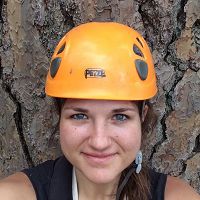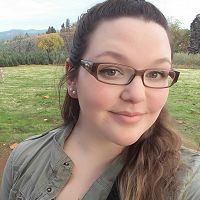Researcher Spotlight: Kimber Moreland
Researchers from Southern Sierra Critical Zone Observatory work in several disciplines and come from a variety of backgrounds. They all have their own story to tell. Take a look at this month's research spotlight Kimber Moreland, graduate student researcher at the University of California, Merced, and see how she got started in the field of critical zone science!
Q&A between Madeline Castro and Kimber Moreland
What is your field of interest/research? How did you become interested in this topic?
I am by training a biochemist but now specialize in soil biogeochemistry. I am fortunate to study climatic affects on soil carbon dynamics in the critical zone from the top of the trees to 10 meters deep into the Earth! When I was a little girl I would make mud pies with Earthworm/beetle toppings for my mom and sister and ever since then I have been fascinated by soil. When I was told that one teaspoon of healthy soil can hold over one billion bacteria I was truly flabbergasted. Understanding that soil is full of secrets and is the foundation of life sparked my curios mind and I decided to pursue my phD in soil biogeochemistry.
What CZOs have you conducted research at? What kinds of research did you do there?
I have worked primarily with the SSCZO but I have also received SAVI funding for a collaboration with the Catalina Jemez CZO. I am currently assessing climatic affects on the soil carbon stock, stability, and stoichiometry.
What do you feel is the most exciting part of your research?
Exploring the mysteries of the deep Earth keeps me awake at night and I am investigating to a depth that my field has mostly ignored especially in regards to climatic affects. I compare my work to exploring the depths of the ocean and I believe that I will unravel important information that needs to be communicated to the world.
Why is your field of study important?
Soil stores more carbon than the atmosphere and vegetation combined. Understanding how soil will respond to climate change is vital to the understanding of what our Earths future will look like. Some also believe that soil will help to mitigate and lessen the impacts of climate change by sequestering more C. The answer to climate change could be under our feet!
What you are most proud of in your research and/or academic/career experiences?
Apart from my research, I have challenged myself to influence my academic and local community and through this pursuit have found meaning and purpose in the numerous service and leadership opportunities I have taken advantage of. One pivotal experience that has shown me that I thrive in leadership roles through service is helping to found BIOTAQ, a STEM outreach program for local high schools. It is currently expanding to include several schools across the central valley. Through my dedication to service and outreach I have been fortunate enough to contribute to meaningful change in my community. This is my life mission and I am jazzed that I can combine my research passion with my mission here on Earth!
What is your favorite part of the Critical Zone (soil, water, rock, etc.) and why?
The CZ is truly captivating because the soil, water, air, vegetation, and living organism work together to create life. These systems are all intertwined and having the opportunity to ask questions about how the world around us works in a natural laboratory is truly fulfilling.
Edited by Michelle Gimore
Kimber Moreland working in the field. Photo by Morgan Barnes.
Critical Zone booth at the 2016 Merced River Fair. Photo by Michelle Gilmore.
People Involved
CZO
-
Sierra, GRAD STUDENT
-
Sierra, UNDERGRAD
-
Sierra, STAFF
Publications
2017
Deep Soil Carbon in the Critical Zone: Amount and Nature of Carbon in Weathered Bedrock, and its Implication for Soil Carbon Inventory . Moreland, K. C.; Tian, Z.; Berhe, A. A.; O’geen, A. T. (2017): Fall Meeting, American Geophysical Union, December 2017. Abstract B33G-03.
Related News
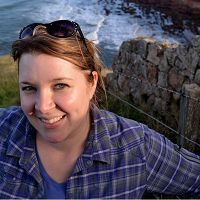
Critical Zone Profile - JORDEN HAYES (geophysicist, Assistant Professor)
23 Mar 2016 - Assistant Professor, Earth Sciences, Dickinson College

Critical Zone Profile - CARLOS OROZA (systems engineer, PhD student)
07 Sep 2015 - PhD Student, Systems Engineering, University of California Berkeley
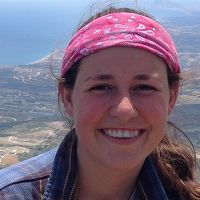
Critical Zone Profile - LINDSAY ARVIN (geomorphologist, PhD student)
07 Sep 2015 - PhD Student, Department of Geology and Geophysics, University of Wyoming
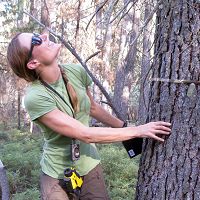
Critical Zone Profile - MELISSA THAW (mountain hydrologist, PhD student)
07 Sep 2015 - PhD Student, Environmental Systems, University of California Merced

Critical Zone Profile - MOHAMMAD SAFEEQ (hydrologist, assistant research scientist)
07 Sep 2015 - Assistant Research Scientist, Sierra Nevada Research Institute, University of California, Merced.

Critical Zone Profiles - Meet the people doing CZO science (Southern Sierra CZO)
07 Sep 2015 - Get a sense of the people and the work. Several members of the Southern Sierra CZO are profiled here, including students and professors.
Explore Further
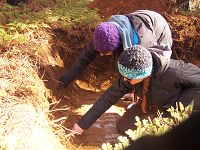

_350_317_80auto.jpg)
